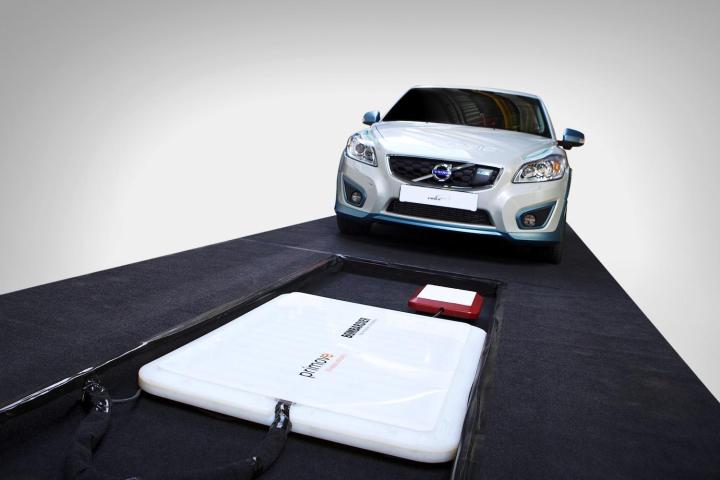
When automakers move to inductive charging for their electrically powered cars, what will they call plug-in hybrids? Park-over hybrids? Magnetic-charge hybrids? Magic hybrids? Clearly, I am not a branding guy.
This branding dilemma is one, it seems, Volvo’s marketing team will likely tackle sometime soon, as the Swedish automaker has just completed a successful inductive charging study on its C30 Electric – with impressive results.
“Inductive charging has great potential. Cordless technology is a comfortable and effective way to conveniently transfer energy. The study also indicates that it is safe,” said Lennart Stegland, Vice President, Electric Propulsion System at Volvo Car Group, in a prepared statement. “There is not yet any common standard for inductive charging. We will continue our research and evaluate the feasibility of the technology in our hybrid and electric car projects.”

The tests demonstrated that the Volvo C30 Electric can receive a full inductive charge in just over 2.5 hours.
This is rather incredible if you think about it. The 120-horsepower C30 Electric – with a range of around 94 miles – normally takes all night to fully recharge on a 220v outlet. By my approximation, wireless inductive charging represents a charge time reduction by more than 60 percent.
Although Volvo has completed a successful and promising inductive charging test run, other companies are instead testing out other wireless chargers. Hevo, for instance, is testing a wireless resonance system, rather than inductive.
Hevo believes that resonance is a more efficient alternative to inductive charging. In resonance charging, unlike inductive charging, coils – in both the vehicle and the charger – are connected to capacitors. These capacitors resonate at a specific frequency. This allows for a more efficient transfer of energy at a higher rate than inductive.
Inductive, by comparison “uses an electromagnetic field instead of a cord to transfer energy between two objects. An induction coil creates an alternating electromagnetic field from a charging base station. A second induction coil in the portable device picks up power from the electromagnetic field and converts it back into an electrical energy that charges the battery.”
It’s exciting to learn that even inductive charging can transfer energy not only with less effort than a corded system but also more quickly.


